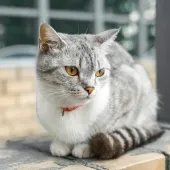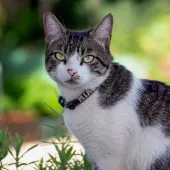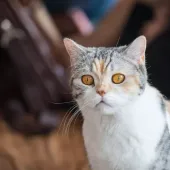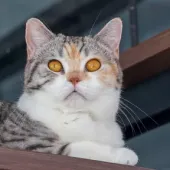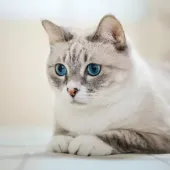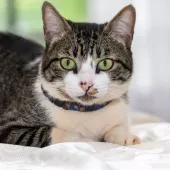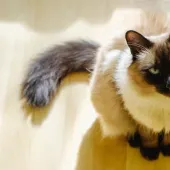The Unique Appeal of American Wirehair Cats: Nature's Quirky Masterpiece
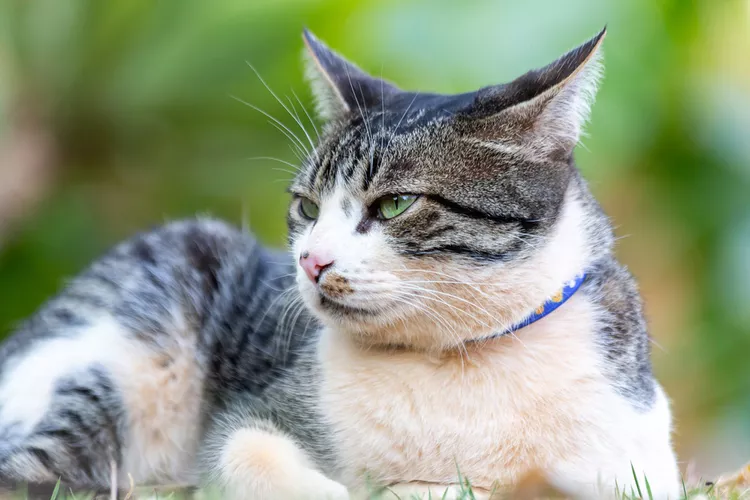
In the diverse tapestry of cat breeds, the American Wirehair cat stands out as a truly unique and fascinating feline marvel. Known for its distinctive and crimped coat, this breed has captured the hearts of cat enthusiasts around the world. Let’s delve into the intriguing world of American Wirehair cats and uncover the charm behind their quirky appearance.
History
In a barn located on Council Rock Farm in Verona, New York, the first American Wirehair breed was officially born. The farm's master, Nathan Mosher, recognized he had a special cat in the spring of 1966. Therefore, Mosher did not give the cay away when cat breeder Joan O'Shea paid a visit to inspect the cat a friend had called her about—a cat similar to the Rex's she bred.
The cat's red-and-white coat, complete with whiskers, and its springy, coiled fur captivated O'Shea. She had never seen a cat like this one before. Once O'Shea convinced Mosher of the value of letting this unique new breed mate well and collected her $50, she was able to take possession of her prize, the appropriately titled Council Rock Farm Adam of Hi-Fi.
Yes, the kitty was truly unique. A weasel had attacked and destroyed the kitten litter Adam had been born into. O'Shea faced a difficult dilemma after becoming the only survivor: how to mate Adam?
One day, an amorous queen cat happened to pass by, solving her problem. The cat reportedly belonged to neighbors who had left it in the care of their son while they went on vacation, and the kid subsequently carelessly let the calico cat out of the house. O'Shea received a call from her neighbors two months later, who had discovered they had a small litter of kittens, some of which were quite similar to O'Shea's tom cat.
O'Shea purchased two of the kittens from her neighbors, and these two appeared to carry the wirehair gene that Adam had been born with. This marked the start of a new family tree. O'Shea sought the assistance of fellow Rex breeders Bill and Madeline Beck, who accepted Amy and started a breeding program, since he wanted to do it right.
After that, Amy gave birth to a sizable litter of wirehaired kittens, solidifying the Wirehair breed's status as the third domestic cat breed of that era (the other two being the American Shorthair and the Maine Coon cats). In actuality, the Wirehair standard was heavily influenced by the American Shorthair national standard. For the Wirehair, the Ash was and remains the only permitted outcross breed.
The American Wirehair was authorized for registration as a distinct breed by the Cat Fanciers Association (CFA) in 1967, and the breed was later approved for championship competition by the CFA in 1978. A Wirehair has routinely earned winning spots in the top 25 best cats, even if they haven't yet been named the CFA's Best Cat. The Wirehair came closest in 2002 and 2003 with third-place Brillocatz Curley Sue in the Best Kitten category, and in 2006–2007 with second-place Cameroncats Christina of Kaw in the Best Cat category.
A Quirky Twist of Genetics
The defining characteristic of the American Wirehair cat is its unusual coat. Unlike other cats, the hair shafts of American Wirehairs are bent and crimped, giving their coat a distinctly coarse and springy texture. This distinctive feature is a result of a natural genetic mutation that occurred in the 1960s, making them one of the rarest cat breeds. Each hair on their body is uniquely textured, adding to their individual charm.
Endearing Appearance
American Wirehair cats boast a medium-sized, muscular body and a sweet, expressive face. Their wiry coat can come in a variety of colors and patterns, ranging from solid to tabby, calico, and more. Their eyes, which can be gold, copper, or blue, add to their captivating appearance. Despite their unconventional fur, American Wirehairs have an endearing charm that makes them irresistible to cat lovers.
Gentle and Affectionate Nature
Beneath their quirky exterior, American Wirehair cats have a gentle and affectionate temperament. They are known for their playful and sociable nature, making them wonderful companions for families and individuals alike. They form strong bonds with their human companions and are often described as loyal and loving. Their friendly disposition and adaptability make them excellent pets for households with children and other pets.
Low Maintenance Beauties
One of the advantages of American Wirehair cats is their low-maintenance coat. Due to its unique texture, their fur is less prone to tangling and matting, requiring minimal grooming. Occasional brushing helps keep their coat in good condition, making them an excellent choice for cat lovers who prefer a pet with lower grooming needs. Regular veterinary care, a balanced diet, and interactive play are essential for their overall health and well-being.
A Quirky Treasure
In a world where uniqueness is celebrated, the American Wirehair cat breed shines as a true gem. Their quirky appearance, combined with their loving nature, makes them not just pets but cherished family members. American Wirehair cats remind us that beauty comes in many forms and that there is something truly special about embracing the unconventional.
Care & Health
There are no innate genetic issues with the Wirehair. Careful breeding has produced a robust and energetic hybrid that makes the Wirehair one of the healthiest and easiest domestic cats to care for and resistant to disease. But there are certain grooming nuances that need to be maintained. Wax accumulation may occur in the ears due to the coarse and curly hair inside, but routine cleaning should avoid any blocking issues in the ear canals.
The skin of some Wirehairs may also be greasy. However, many breeders advise giving the cat a gentle bath with a light shampoo instead of brushing them. By doing this, hair damage is prevented. It is recommended that the hair be air dried or gently dried with a towel; it is especially crucial that the hair not be brushed or combed while it is still wet. Since no two Wirehair cats are alike and some hair qualities might be inherited from the parents, you should always ask the breeder how to take care of your cat.
The toughest coats are the most fragile and brittle, according to some breeders, who have noted that stress or weather variations have caused hair and skin issues in their Wirehairs.
Despite American wirehair rigorus health, the owner must also aware of these common disease that can affect cats :
- Hypertrophic cardiomyopathy
- Obesity
- Periodontal disease
- hip dysplasia
Interesting facts
- An american breed.
One American breed is the American Wirehair. Cat breeder Joan O'Shea raised a special batch of cats that resulted in the first born in New York. Only 12 years after the breed's inception in 1966, the breed received official registration in 1978. - There's a reason why they are named Wirehairs.
American Wirehairs are named by their distinctive coat, as you might have guessed. Their fur has a roughness and appearance similar to wire. Its coat is the product of accidental mutations. The coat could only be passed down to subsequent generations with the help of an expert breeder. - These farm kitties are amazing.
Farm cats of the American Wirehair breed are ideal. Their gregarious and entertaining nature makes them excellent companions. They will amuse themselves and even go rodent hunting in the vicinity at the same time. - According to the Cat Fancier Association's 2017 round-up of 41 recognised breeds, American wirehairs are the rarest breed of cat.
- The rough, springy coat of the American wirehair is compared by some to steel wool.
- The American wirehair and American shorthair are frequently confused for one another, and crosses between the two similar-looking (and acting!) breeds occur frequently.
In conclusion, the American Wirehair cat breed stands as a testament to the wonders of nature. Their crimped coat and delightful personality make them a captivating addition to any home, bringing joy, laughter, and a touch of quirkiness to the lives of those lucky enough to call them family.
